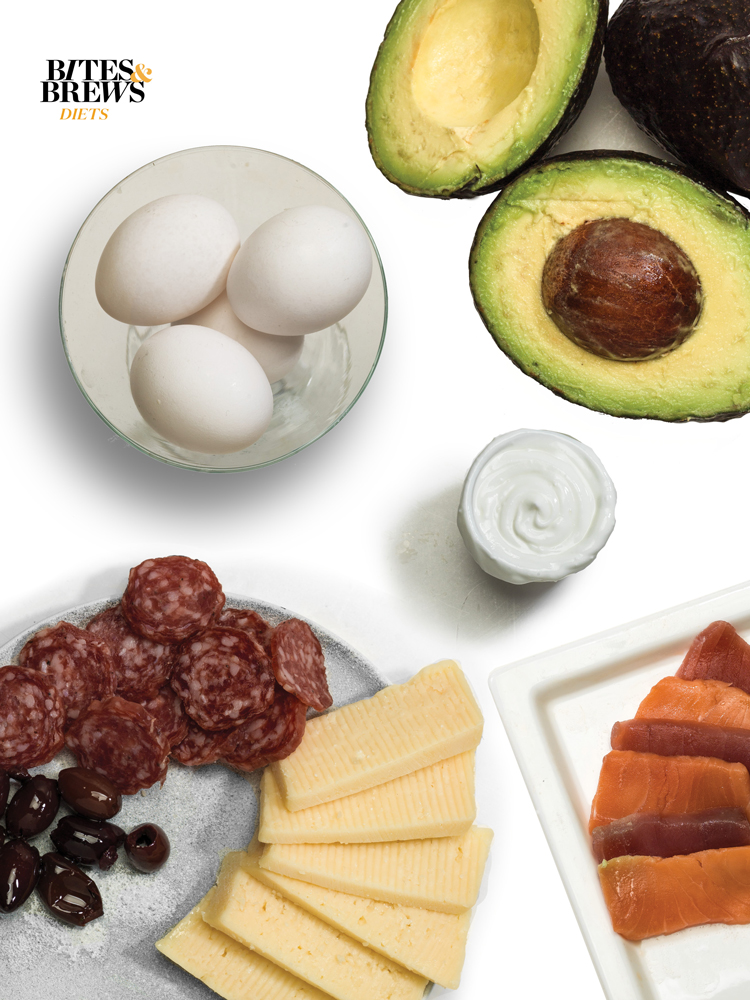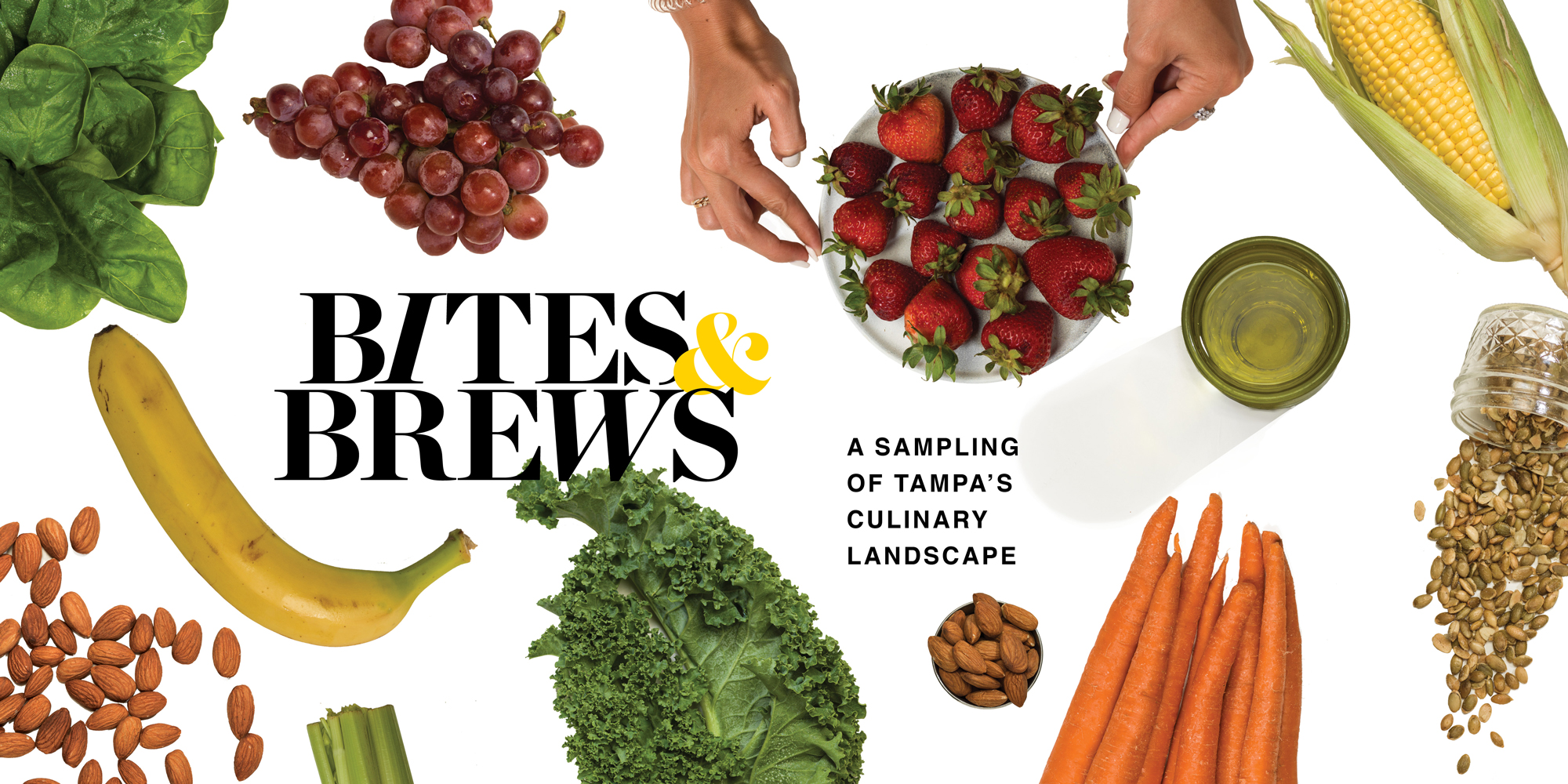It seems like every day there’s a new diet fad percolating through social media, promising a new method with better results. Nothing will ever replace exercise and healthy, proportional eating, but it never hurts to try a new method. We asked local experts for their input on three of the trendiest diets, along with some of the foods that fit into each plan.
The Experts:
Brenda Fikry
A registered dietitian nutritionist (RDN) at St. Petersburg Nutrition for 10 years, specializing in weight management and athletic performance.
Andres Ayesta
A nutritionist and registered dietitian at Vive Nutrition with five years of experience in sports nutrition and therapeutic diets.
Nevine Robidoux
Owner of Nutrology, Inc. with more than 15 exercise- and nutrition-related, peer-reviewed publications.
Alkaline Diet
Eliminating acidic foods can alter your body’s chemical balance (pH level), improving overall health and making nutritional changes easier to track, but research on the diet’s full benefits remains inconclusive.
GOOD FOODS: Beet greens, spinach, kale, bananas, sweet potatoes, celery, carrots, eggplant, pineapple, strawberries
BF — Following an alkaline diet, you may lose weight and prevent disease by eating higher amounts of “alkaline” foods such as fruits, nuts, legumes and vegetables. However, research does not support the conclusion that these benefits are due to these foods being alkaline. Acid-forming foods such as lean meat, fish and whole grains can also help with weight management and disease prevention.
AA — The research available to date has not shown any benefits from a diet that promotes alkalinity. Having said this, a diet high in fruits and vegetables is always ideal.
NR — In my opinion, there is nothing specific about the alkaline diet that makes it advantageous. However, this diet does promote reducing the intake of processed foods and increasing vegetable and fruit consumption, and I totally support that.
Whole30 Diet
This diet is all about replacing processed foods in your diet with “cleaner,” unprocessed whole foods for 30 consecutive days.
GOOD FOODS: All vegetables, fruits, unprocessed meats, fish and shellfish, eggs, nuts and seeds, unsweetened coffee, olive oil, coconut oil
BF — The Whole30 diet can be a great jump-start to a nutrition plan but is not realistically sustainable for long-term results. It is a very restrictive diet, which can lead to an unhealthy relationship with food and even future binge-eating on frowned-upon foods. A healthy, sustainable nutrition plan should be more balanced and not as restrictive as Whole30.
AA — A good diet is one that can be sustainable long-term. You certainly can do that in this type of lifestyle, as long as there is good balance in all macro and micronutrients. Moderation is key in everything.
NR — Generally, cutting out sugar completely for a few weeks helps to curb cravings, so this could work well for those who are desperate to kick that sugar addiction. However, this type of diet that cuts so many food groups can lead to feeling deprived, which may lead to a binge on day 31 and defeat the purpose [of the diet].
 Ketogenic Diet
Ketogenic Diet
The keto diet was originally founded in 1923 to treat epilepsy and is proven through research to reduce incidences of seizures. Replacing carb intake with fatty foods, combined with intermittent fasting, triggers the body into a constant calorie burn.
GOOD FOODS: Seafood, cheese, avocados, meat and poultry, eggs, coconut oil, cottage cheese, plain Greek yogurt, olives, dark chocolate, unsweetened coffee & tea
BF — Cutting out an entire food group — carbohydrates — will obviously help one to lose weight as long as the carbohydrates remain completely restricted. This may lead to temporary weight loss success. Evidence is lacking for the keto diet and its long-term results, as compliance becomes lower and lower with time, and side effects such as low energy, brain fog, headaches and mood swings, to name a few, become higher.
AA — A high-fat, low-carbohydrate diet pushes the body to produce ketone bodies as a source of energy known as ketosis, a state in which the body becomes effective as using fat a source of fuel. The downside of the ketogenic diet is that it can be restrictive without the proper education.
NR — Keto proponents talk about the addictiveness of carbs, but do we really ever feel addicted to foods like apples, quinoa or black beans? No, just like we don’t feel addicted to fat-based foods like almonds, ribeye steak or chia seeds. It’s the sugar-fat-salt combination that promotes cravings. Foods that fit that category are best avoided no matter what type of diet you follow to mitigate cravings.
Final Recommendations
BF — I agree with the Whole30 the most because it’s not a permanent diet or a prescription for eating. It’s a diet encouraging the healthy foods that can only benefit a person’s health.
AA — For someone wanting to lose weight and improve their health, starting with a Whole30 program is a great introduction to a better way of eating. At the end, perhaps transition to a ketogenic diet.
NR — In my opinion there is absolutely no reason to eliminate entire food groups like we see with all three of these diets. Individuals respond differently to various foods, and I wholeheartedly believe that a one-size-fits all approach doesn’t work when it comes to food.



